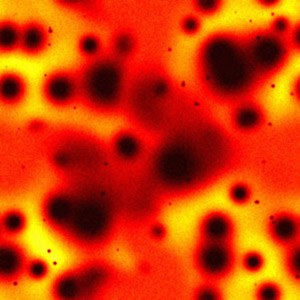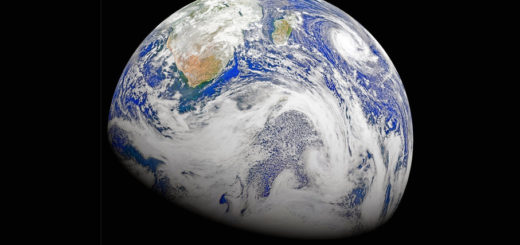How Sunspots Work

The Aztecs thought that their sun god had pockmarks on his face. The ancient Chinese referred to them as stars inside the solar orb. One Renaissance astronomer argued that they were actually undiscovered planets. Today, some believe their appearance is linked to waves of UFO sightings and paranormal activity. Others offer them as an alternative explanation for human-caused climate change. The rest of us wonder if they’re the reason for dropped cell phone calls or static-plagued radio stations.
We’re talking about sunspots, those peculiar dark areas that pop up regularly on the surface of the sun. They usually appear in pairs or in groups called belts on either side of the sun’s equator, between 40 degrees and 50 degrees latitude north and south. Sunspots vary tremendously in size, ranging from less than 200 miles (32.8 kilometers) across to many times the size of the Earth. Some small sunspots may last for less than an hour, but larger ones can last up to six months. Some sunspots — such as one in 2004 that measured 20 times the size of our planet — are big enough to be seen by the naked eye. Keep in mind, however, that staring directly at the unfiltered sun is an extremely bad idea because it can harm your eyes. (Later on, we’ll explore safe ways to observe sunspots.)
The frequency with which sunspots appear and their location on the sun’s surface changes over time in a pattern called the sunspot cycle. Lest you think that they’re little more than celestial quirks, sunspots and related solar phenomena do have certain effects on the Earth — if not in the ways that UFO enthusiasts and climate change skeptics imagine.
In the next section, we’ll discuss the physical processes that create sunspots.
Sunspots appear dark to us because they’re cooler than the surrounding areas on the sun’s visible surface, or photosphere, which has a temperature of about 10,000 degrees Fahrenheit (5,537.8 degrees Celsius). The dark interior of a sunspot, called the umbra, is about 1,600 degrees cooler than the rest of the sun’s surface. That interior is surrounded by a larger, lighter area called the penumbra, which is about 500 degrees cooler than the rest of the sun. Sunspots are cooler because they’re areas of intense magnetism — so intense that it inhibits the flow of hot gases from the sun’s interior to its surface.
Sunspots occur because the sun isn’t a hunk of rock like the Earth and the inner planets, but a ball of continually circulating hot gases that doesn’t move in one piece. The interior and the exterior of the sun rotate separately; the outside rotates more quickly at the equator than at the solar north and south poles. (Specifically, a point on the equator takes 25 Earth days to go around, while a point near one of the poles takes 36 days to complete its rotation.) Over time, all that messy and uneven movement twists and distorts the sun’s main magnetic field in the same way that your bed sheets get wrinkled and bunched up when you toss and turn in your sleep. The bunched up spots — actually twists in the magnetic field lines — have so much magnetic power that they push back the hot gases beneath them and prevent the heat from rising directly to the surface. In other words, they become sunspots. Because sunspots are cooler than the rest of the sun’s surface, they look darker. At the same time, the hot gases blocked by these sunspots flow into the areas around them, making those areas even hotter and brighter than normal. This contrast makes sunspots stand out even more.
To an observer on Earth, sunspots appear to move because sun’s surface itself is moving (though not in one piece, as we discussed). It takes the sun much longer to complete its rotation than the Earth does, but because the sun is 100 times larger than our planet, a sunspot looks like it’s moving four times faster than a point on Earth.
The average sunspot is as big as the Earth, but some are really, really huge. Scientists measure them by comparing them to the sun’s visible area (that is, the half of the sun that we can see from Earth). The biggest recorded sunspot in the last century occurred in 1947. It covered 6,132 millionths of the sun’s visible area — roughly 18 times the Earth’s surface area [source: European Space Agency].
In the next section, we’ll analyze the sunspot cycle and what causes it.
The Royal Observatory, Greenwich in London has kept detailed records of the size and location of sunspots since 1874. That data shows that sunspots don’t appear randomly on the sun’s surface, but instead are concentrated in two latitude bands on each side of the equator. The frequency, location and intensity of sunspots within those bands also changes over time. Roughly every 11 years, the number of sunspots increases from nearly zero to more than 100, and then decreases to near zero again as a new cycle starts. This pattern is called the sunspot cycle. Since 1700, sunspot cycles have varied in length between nine and 14 years. At the beginning of the cycle, sunspots form in the sun’s mid-latitudes. But as the cycle progresses, they occur closer to the equator.
According to a model recently developed by astronomer Mausumi Dikpati and his colleagues, the cycle occurs because the Sun contains a sort of conveyor belt that circulates a hot, electrified gas called plasma between the sun’s equator and its poles and then back again over a period of years. When sunspots formed early in a sunspot cycle begin to decay, they leave a kind of magnetic imprint on the moving plasma beneath them. The conveyor belt then carries the plasma with those magnetic imprints toward the poles and then back inside the sun. The magnetic fields within the sun are distorted and intensified even more before the conveyor belt sends the plasma to resurface near the equator. There, the plasma forms new, even more powerful sunspots.
Sunspot cycles are asymmetrical, with sunspot activity rising quickly at the beginning of a cycle and declining gradually after that. The point where sunspots appear and reach their peak of intensity is called the solar maximum, (“solar max” for short). The low point, where there’s hardly any sunspot activity, is called the solar minimum. Solar minimums usually last for several years, but they sometimes endure for much longer. For example, there was a period between 1650 and 1710 — called the Maunder minimum, after the astronomer who discovered it — when there was little or no sunspot activity for 60 years. (The cause remains a mystery, though some astronomers have theorized that other stars occasionally go through such long dormant periods as well.) Maunder also plotted sunspot activity over time on a graph, producing a butterfly-shaped diagram in which sunspot cycles looked like the butterfly’s wings. Scientists continue to work on ways to predict sunspot activity, so we can better cope with its potentially disruptive effects on power grids and radio communications.
In the next section, we’ll look at the effects that sunspots have on Earth.



 Creators of mankind
Creators of mankind Description of “Tall white aliens”
Description of “Tall white aliens” Where they came from?
Where they came from? About hostile civilizations
About hostile civilizations The war for the Earth
The war for the Earth “Tall white aliens” about eternal life
“Tall white aliens” about eternal life Video: “Nordic aliens”
Video: “Nordic aliens” Aliens
Aliens Alien encounters
Alien encounters The aliens base
The aliens base UFO
UFO Technology UFO
Technology UFO Underground civilization
Underground civilization Ancient alien artifacts
Ancient alien artifacts Military and UFO
Military and UFO Mysteries and hypotheses
Mysteries and hypotheses Scientific facts
Scientific facts


















